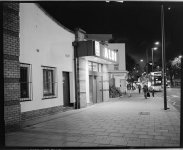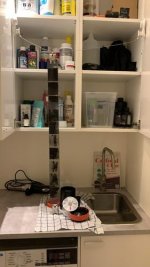amey
Member
Hello all!
I am about 80% newbie to developing film. I tried it years ago for B&W film in a tiny little flat. Then realised it was too much faff with the lack of space.
Now I have space and time 🙂
I only want to develop and shoot 120. And B&W to begin with. Ideally would like to do 3 rolls at once. I pretty much only shoot HP5. Depending on the season I rate it from 200 to 3200 iso.
I looked at Jobo CPE2, there are a couple of deals around me in London that seem good but then I spoke to a friend who develops his own film and he said I am better off with a 2nd hand Annova Sous Vide thing and a big box which kinda replicate the Jobo for temperature but not agitation. None of the Jobo I have seen (or can afford) have a lift.
I was wondering what advice would you give to someone like me? I haven't purchased anything but seen Annova for £50 going locally. Where do I start?
Thanks in advance!
I am about 80% newbie to developing film. I tried it years ago for B&W film in a tiny little flat. Then realised it was too much faff with the lack of space.
Now I have space and time 🙂
I only want to develop and shoot 120. And B&W to begin with. Ideally would like to do 3 rolls at once. I pretty much only shoot HP5. Depending on the season I rate it from 200 to 3200 iso.
I looked at Jobo CPE2, there are a couple of deals around me in London that seem good but then I spoke to a friend who develops his own film and he said I am better off with a 2nd hand Annova Sous Vide thing and a big box which kinda replicate the Jobo for temperature but not agitation. None of the Jobo I have seen (or can afford) have a lift.
I was wondering what advice would you give to someone like me? I haven't purchased anything but seen Annova for £50 going locally. Where do I start?
Thanks in advance!




